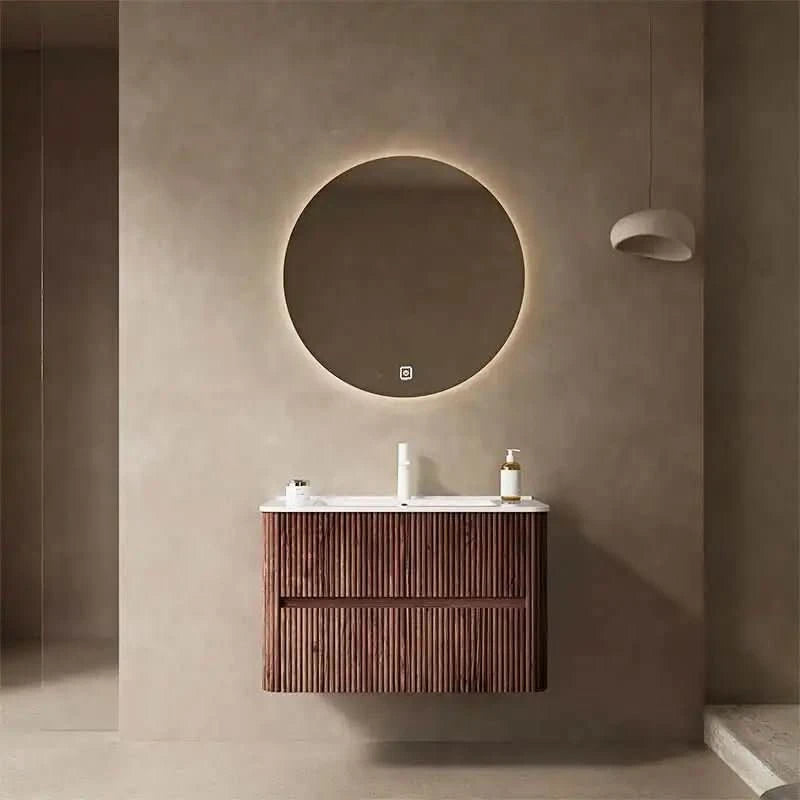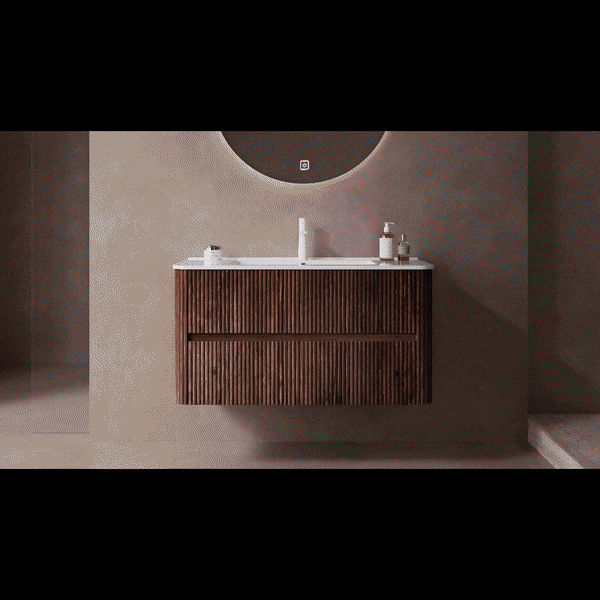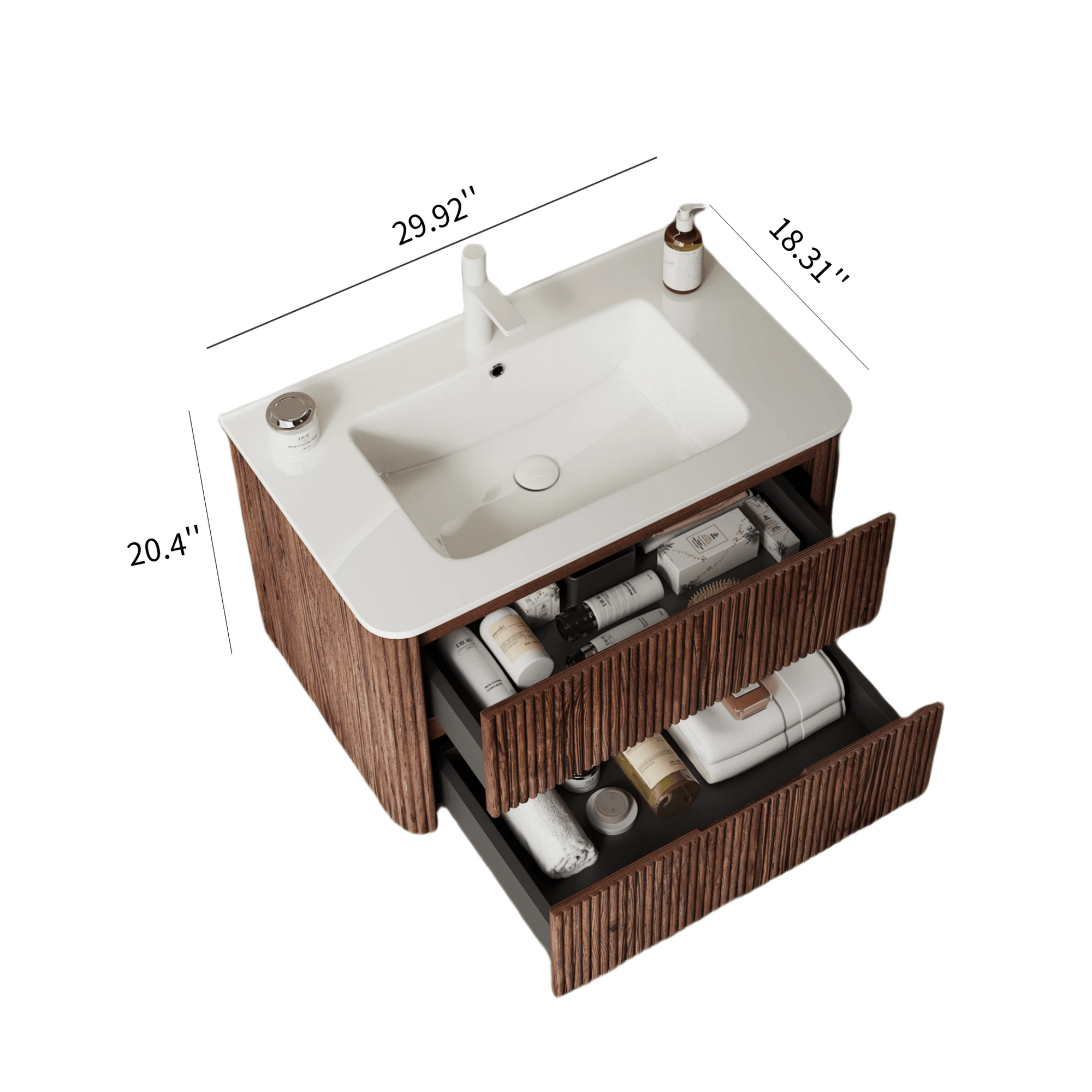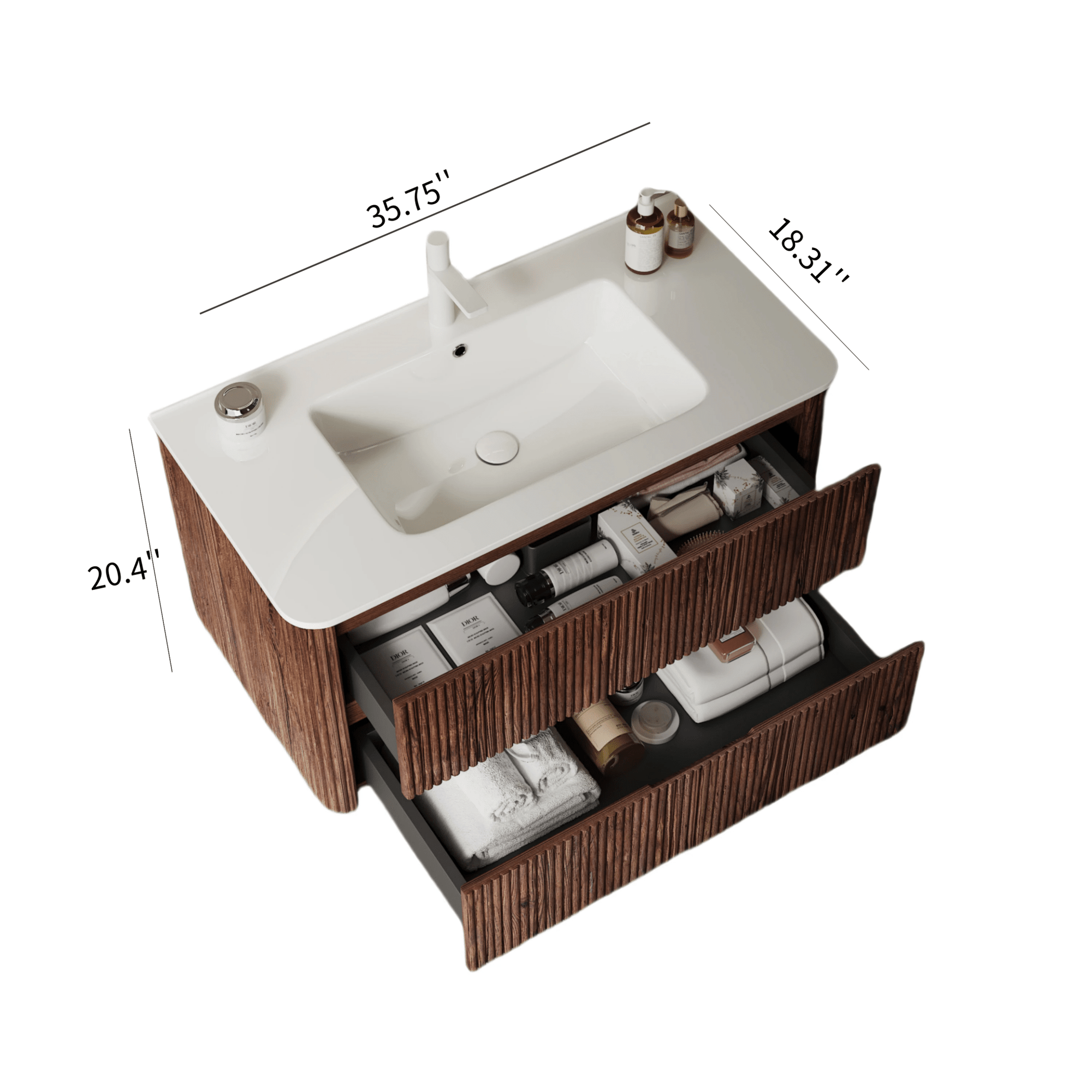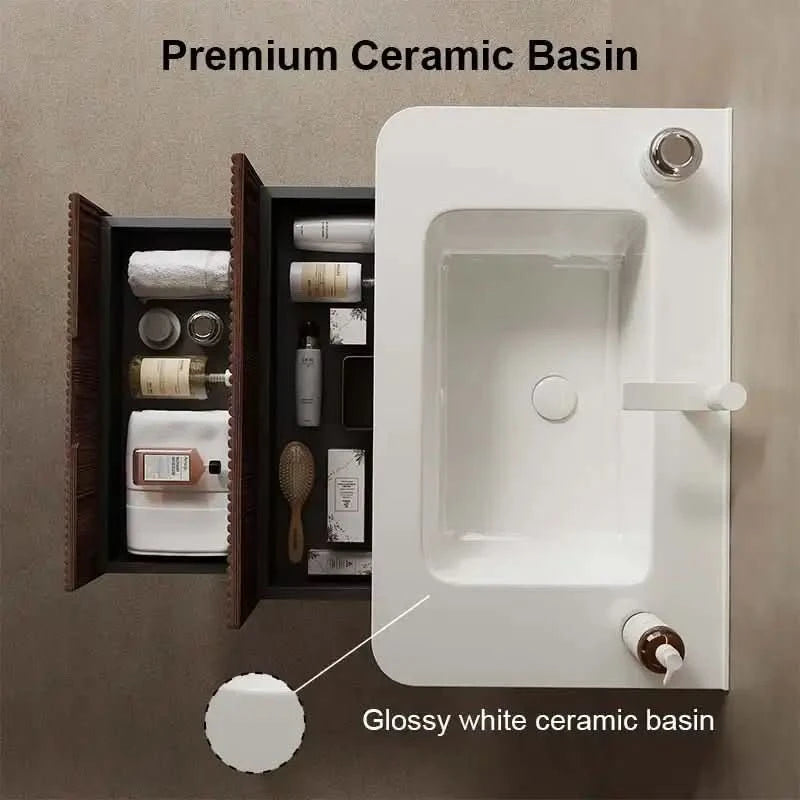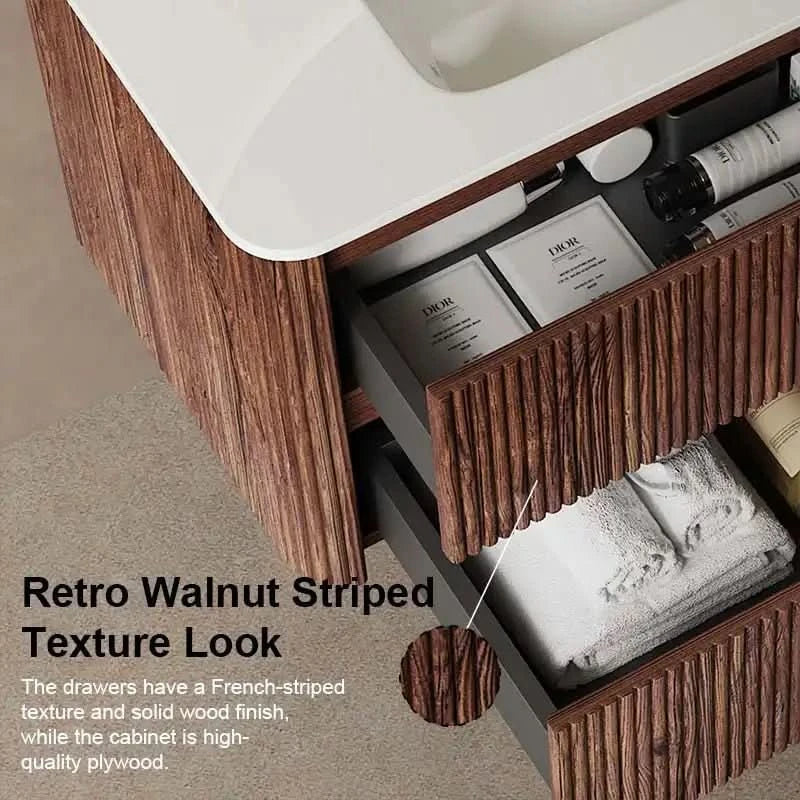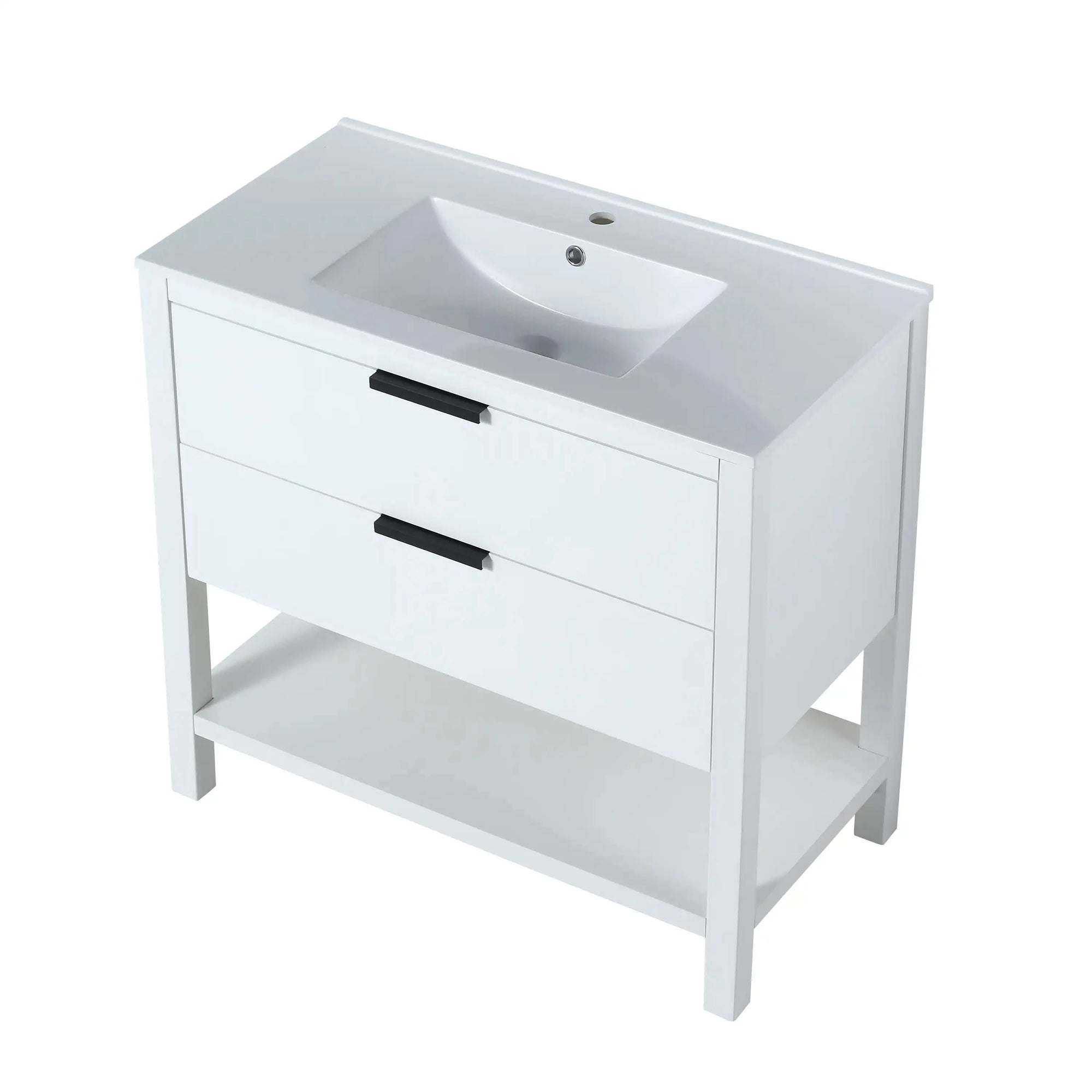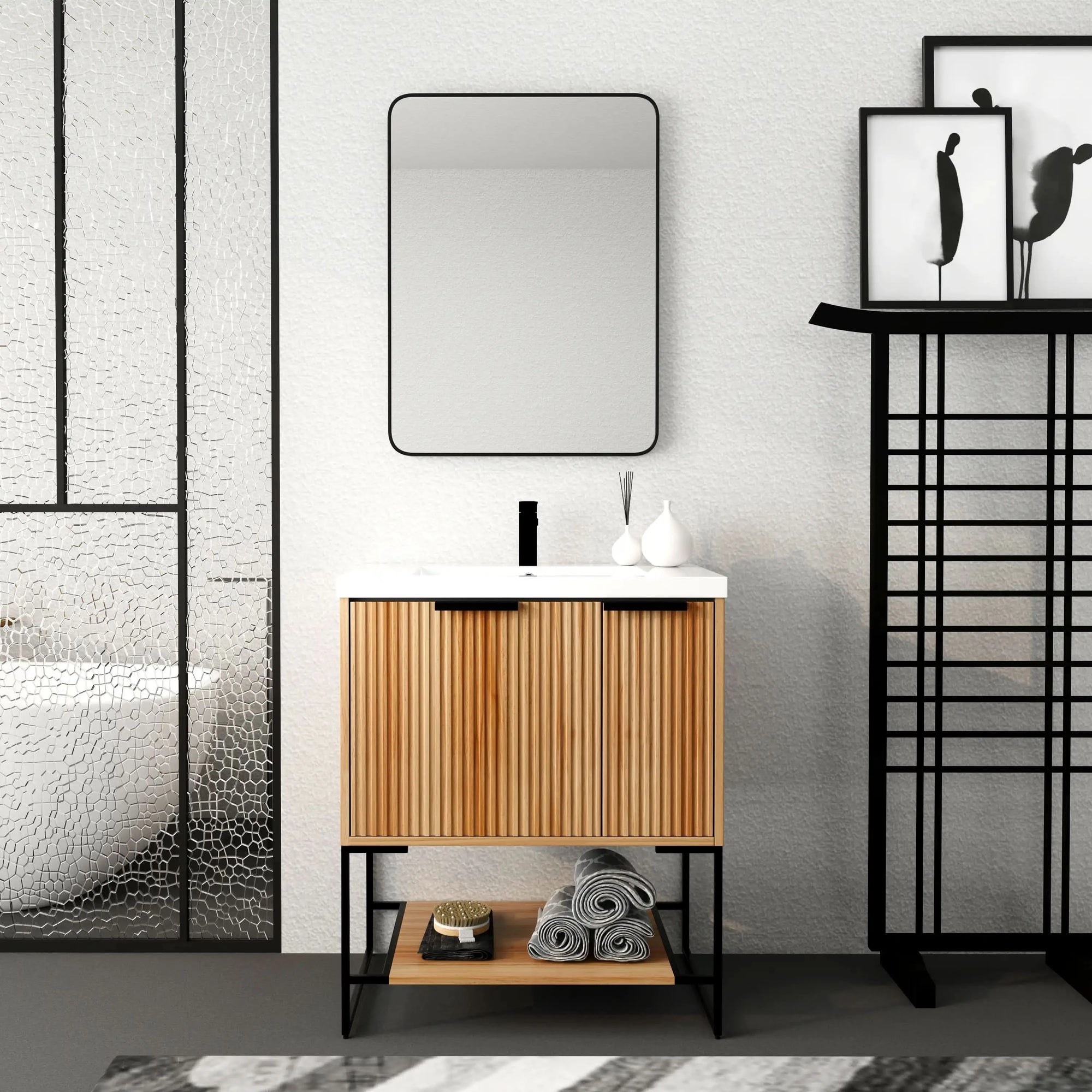Choosing the right bathroom vanity top is one of the most important decisions when designing or remodeling your bathroom. Vanity tops not only contribute significantly to the bathroom’s aesthetic appeal, but they also need to be durable enough to withstand daily use in a humid, water-prone environment. With so many materials available, selecting the right vanity top material can feel overwhelming.
In this comprehensive guide, we'll explore the most common materials used to make bathroom vanity tops, discuss their pros and cons, and provide insights into how to choose the right one for your space. We'll also highlight some of the stylish and durable vanity options from ACE DECOR, including the AL Matte White Wall-Mounted Cabinet, AL White Freestanding Cabinet, and AL White Walnut Wall-Mounted Cabinet.
Why Choosing the Right Vanity Top Material Matters
Before diving into specific materials, let’s first discuss why selecting the right material for your vanity top is critical. The bathroom is one of the busiest rooms in your home, and its surfaces need to handle moisture, heat, and frequent use. A vanity top should meet these demands while also complementing your bathroom's style.
Here are some key factors to consider:
- Durability: The vanity top must withstand regular use, water exposure, and cleaning products without cracking or warping.
- Aesthetic Appeal: The material should align with the overall design of your bathroom, from modern minimalism to traditional elegance.
- Maintenance: Some materials require more maintenance than others, and it’s important to select one that matches your lifestyle.
- Cost: Vanity top materials vary greatly in price, so choosing a material that fits your budget while meeting your functional needs is important.
Now, let’s take a closer look at some of the most common materials used for bathroom vanity tops.
Common Materials for Bathroom Vanity Tops
1. Granite
Granite is one of the most popular materials for bathroom vanity tops, thanks to its natural beauty, durability, and luxurious appeal. It’s available in a wide range of colors, patterns, and finishes, making it easy to find a granite slab that complements your bathroom design.
Pros:
- Durability: Granite is one of the most durable vanity top materials, resistant to heat, scratches, and stains when sealed properly.
- Unique Patterns: Because granite is a natural stone, each slab is unique, with its own distinct veining and coloration.
- Adds Value: Installing a granite vanity top can increase your home’s resale value, as it’s considered a premium material.
Cons:
- Maintenance: Granite requires regular sealing to protect it from stains and moisture.
- Cost: It tends to be one of the more expensive options, especially for large vanity tops.
For homeowners seeking a high-end look, granite pairs beautifully with modern designs like the AL Matte White Wall-Mounted Cabinet, where the clean lines of the vanity can be offset by the organic patterns of granite.
2. Quartz
Quartz has quickly become one of the top choices for bathroom vanity tops due to its incredible durability and low maintenance. Unlike natural stone, quartz is engineered from crushed quartz crystals mixed with resin, creating a non-porous, uniform surface.
Pros:
- Low Maintenance: Quartz doesn’t need to be sealed, and it’s resistant to scratches, stains, and moisture.
- Wide Variety: Since quartz is man-made, it’s available in a vast array of colors and patterns, from pure white to more dramatic shades.
- Durability: Quartz is incredibly hard and resistant to damage, making it ideal for busy family bathrooms.
Cons:
- Price: Quartz is generally more expensive than some natural stones, although its long lifespan and low maintenance can make it worth the investment.
- Limited Heat Resistance: While durable, quartz can be damaged by extreme heat, so you’ll need to be cautious with hot styling tools.
A quartz vanity top works particularly well with the AL White Freestanding Cabinet, where its seamless, glossy appearance can enhance the clean and contemporary lines of the vanity.
3. Marble
Marble is a timeless material that has been used in luxury bathrooms for centuries. Known for its elegant veining and beautiful finish, marble creates a classic, sophisticated look. However, it does come with some trade-offs in terms of durability and maintenance.
Pros:
- Aesthetic Appeal: Marble’s natural beauty and luxurious appearance make it one of the most desirable materials for bathroom vanity tops.
- Customizable: Marble can be honed or polished to create different finishes, from matte to high-gloss.
Cons:
- Prone to Staining and Scratching: Marble is a soft, porous stone, meaning it’s more susceptible to scratches, stains, and etching from acidic substances like toothpaste or citrus-based cleaners.
- High Maintenance: Marble requires regular sealing and can be more challenging to maintain compared to quartz or granite.
For bathrooms with a more classic or elegant design, a marble vanity top can pair beautifully with the warmth of wood, like in the AL White Walnut Wall-Mounted Cabinet, creating a balance of natural textures.
4. Solid Surface (Corian)
Solid surface materials, often referred to by brand names like Corian, are made from a blend of acrylic and natural minerals. This non-porous material is available in a wide range of colors and patterns and is an affordable alternative to natural stone.
Pros:
- Non-Porous: Solid surface materials are completely non-porous, making them resistant to water, stains, and bacteria.
- Seamless Look: Since it can be molded into virtually any shape, solid surface materials allow for integrated sinks and seamless designs.
- Easy to Repair: Minor scratches or chips can easily be sanded out, making solid surface vanity tops long-lasting and easy to maintain.
Cons:
- Less Heat Resistance: Solid surface materials are not as heat-resistant as stone, so caution is needed when placing hot items on the surface.
- Can Scratch: While minor scratches can be repaired, solid surfaces are more prone to scratching than quartz or granite.
Solid surface materials are ideal for minimalist, modern bathrooms. A vanity like the AL Matte White Wall-Mounted Cabinet pairs perfectly with a solid surface top for a streamlined, contemporary look.
5. Laminate
Laminate vanity tops are a budget-friendly option that have come a long way in recent years. Laminate is made from layers of plastic bonded to particleboard or wood, and modern designs can mimic the look of more expensive materials like marble or granite.
Pros:
- Affordable: Laminate is one of the most affordable vanity top materials available.
- Variety of Designs: With technological advancements, laminate can replicate the look of natural stone or wood at a fraction of the cost.
- Low Maintenance: Laminate is easy to clean and doesn’t require sealing like natural stone.
Cons:
- Less Durable: Laminate can be prone to chipping and isn’t as durable as stone or solid surface materials.
- Vulnerable to Moisture: If the edges of the laminate are damaged, water can seep in and cause the particleboard underneath to swell.
While laminate may not have the same luxurious appeal as natural stone, it’s a practical option for budget-conscious homeowners. It’s best suited for low-traffic areas, such as guest bathrooms or powder rooms.
6. Concrete
For homeowners looking for something truly unique, concrete vanity tops offer a customizable, modern industrial look. Concrete can be molded into any shape and can be stained, polished, or textured to create a personalized design.
Pros:
- Customizable: Concrete can be shaped, stained, and textured to fit your exact design preferences.
- Durability: When properly sealed, concrete is highly durable and resistant to scratches and stains.
- Modern Appeal: Concrete gives bathrooms a sleek, industrial look that can be tailored to modern or contemporary spaces.
Cons:
- Requires Sealing: Concrete is porous and needs to be sealed regularly to prevent stains and moisture damage.
- Cracking: Over time, concrete can develop small cracks, which may add to its character or detract from its appearance depending on your perspective.
Concrete vanity tops are ideal for modern, minimalist spaces, especially when paired with sleek designs like the **[AL White Freestanding Cabinet
](https://acedecorbath.com/products/al-white-freestanding-mounted-cabinet)**. The combination of the rugged concrete look with a clean, modern cabinet creates an eye-catching contrast that adds industrial flair to any bathroom.
How to Choose the Right Vanity Top for Your Bathroom
Now that you’re familiar with the most common materials for bathroom vanity tops, how do you choose the right one for your home? Here are some key factors to keep in mind:
1. Budget
Vanity top materials vary greatly in price, with options like laminate and solid surface being more affordable, while quartz, marble, and granite fall on the higher end. Set a budget before you start shopping to help narrow down your choices.
2. Bathroom Style
The material you choose should complement your bathroom’s design. Sleek, modern bathrooms often pair well with quartz or solid surface, while more traditional bathrooms might benefit from the natural beauty of marble or granite. For example, the AL White Walnut Wall-Mounted Cabinet pairs beautifully with natural materials like marble to enhance a classic, elegant aesthetic.
3. Durability and Maintenance
Consider how much maintenance you’re willing to put into your vanity top. Some materials, like granite and marble, require regular sealing to protect them from moisture and stains. If you prefer a low-maintenance option, quartz or solid surface materials might be the best choice for your lifestyle.
4. Size and Layout
Make sure to measure your space accurately before selecting a vanity top. If you have a custom vanity, you might need a material that can be easily cut and shaped, such as solid surface or concrete. Standard vanities, like the AL Matte White Wall-Mounted Cabinet, are designed to accommodate standard-sized vanity tops.
Frequently Asked Questions (FAQ)
Q1: What is the most durable material for bathroom vanity tops?
A: Quartz is considered one of the most durable materials for bathroom vanity tops. It is resistant to stains, scratches, and moisture, making it ideal for high-traffic bathrooms.
Q2: Is marble a good choice for bathroom vanity tops?
A: Marble is a beautiful and luxurious material, but it requires regular maintenance and sealing to protect it from moisture and stains. If you’re willing to invest time in upkeep, marble can be a stunning choice for your bathroom.
Q3: What’s the best budget-friendly material for vanity tops?
A: Laminate and solid surface materials are budget-friendly options that offer a wide variety of styles and colors. While they may not have the same durability as stone, they are affordable and easy to maintain.
Q4: How do I maintain a granite vanity top?
A: To maintain a granite vanity top, it’s important to clean up spills quickly and reseal the surface periodically to protect it from stains and moisture damage.
Conclusion
Selecting the right material for your bathroom vanity top is a key decision that impacts both the functionality and style of your bathroom. Whether you’re drawn to the luxury of marble, the durability of quartz, or the affordability of laminate, there’s a material out there to meet your needs and design preferences.
Brands like ACE DECOR offer a range of high-quality vanities that can be paired with various vanity tops. Whether you choose the minimalist AL Matte White Wall-Mounted Cabinet or the elegant AL White Walnut Wall-Mounted Cabinet, your bathroom vanity will serve as the focal point of your space.
By considering factors like durability, maintenance, style, and budget, you’ll be able to choose the best vanity top material for your home, ensuring your bathroom remains both functional and beautiful for years to come.









